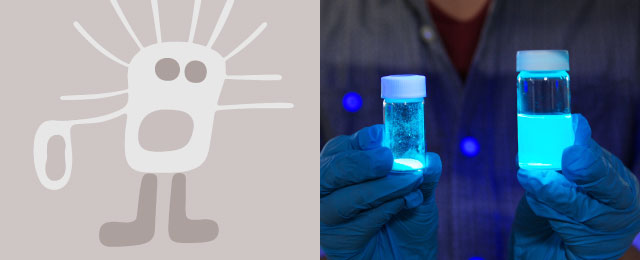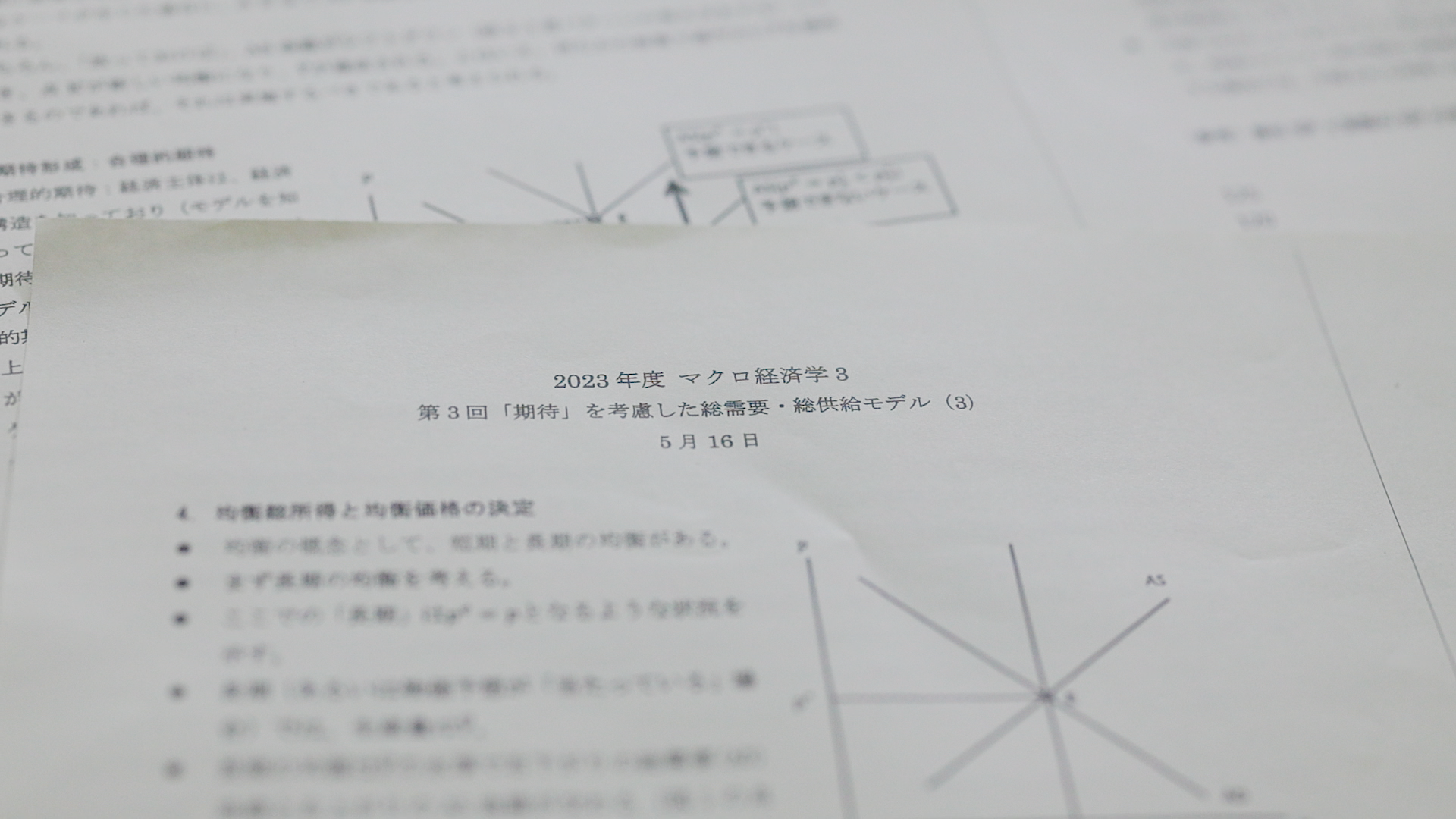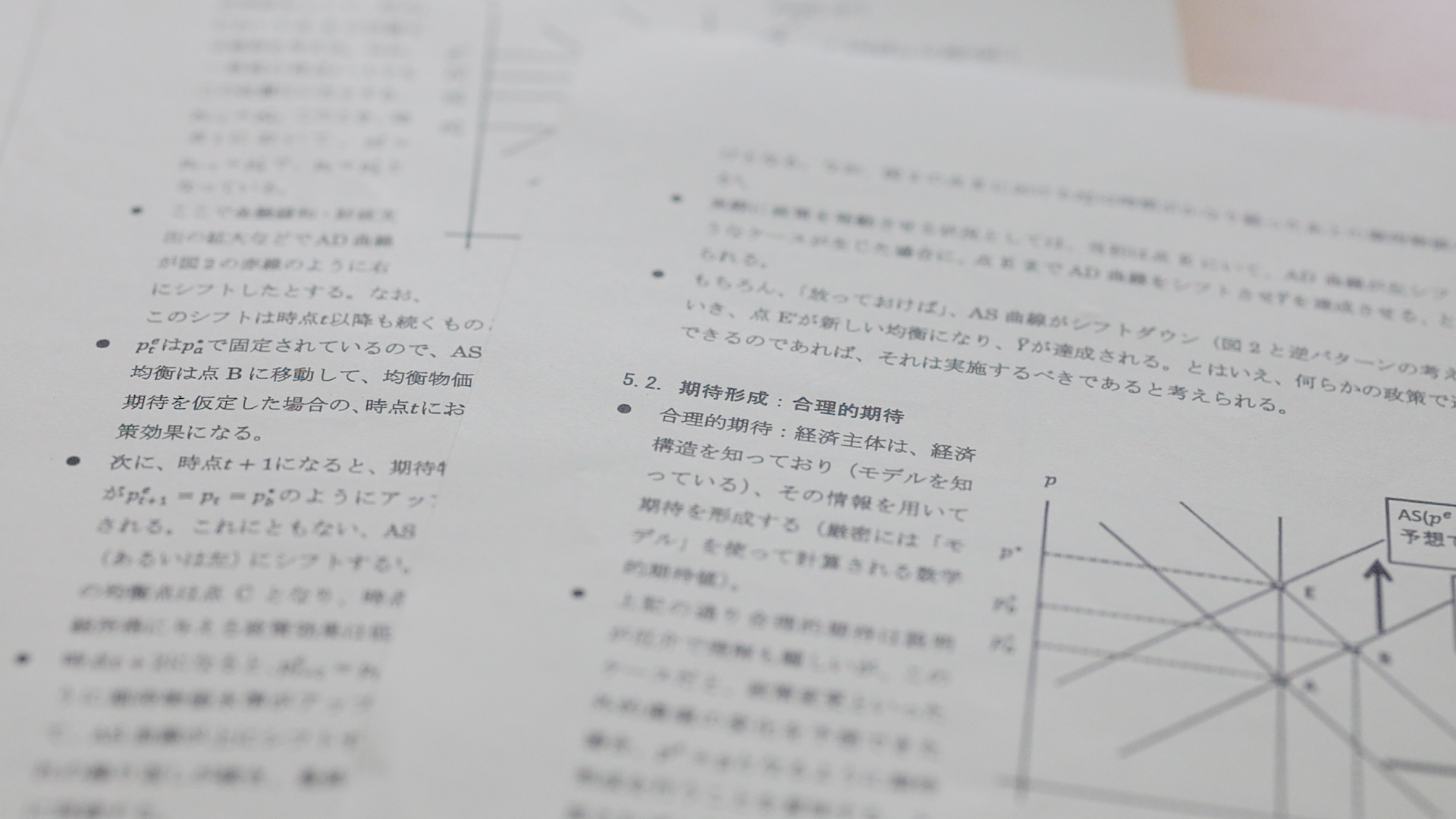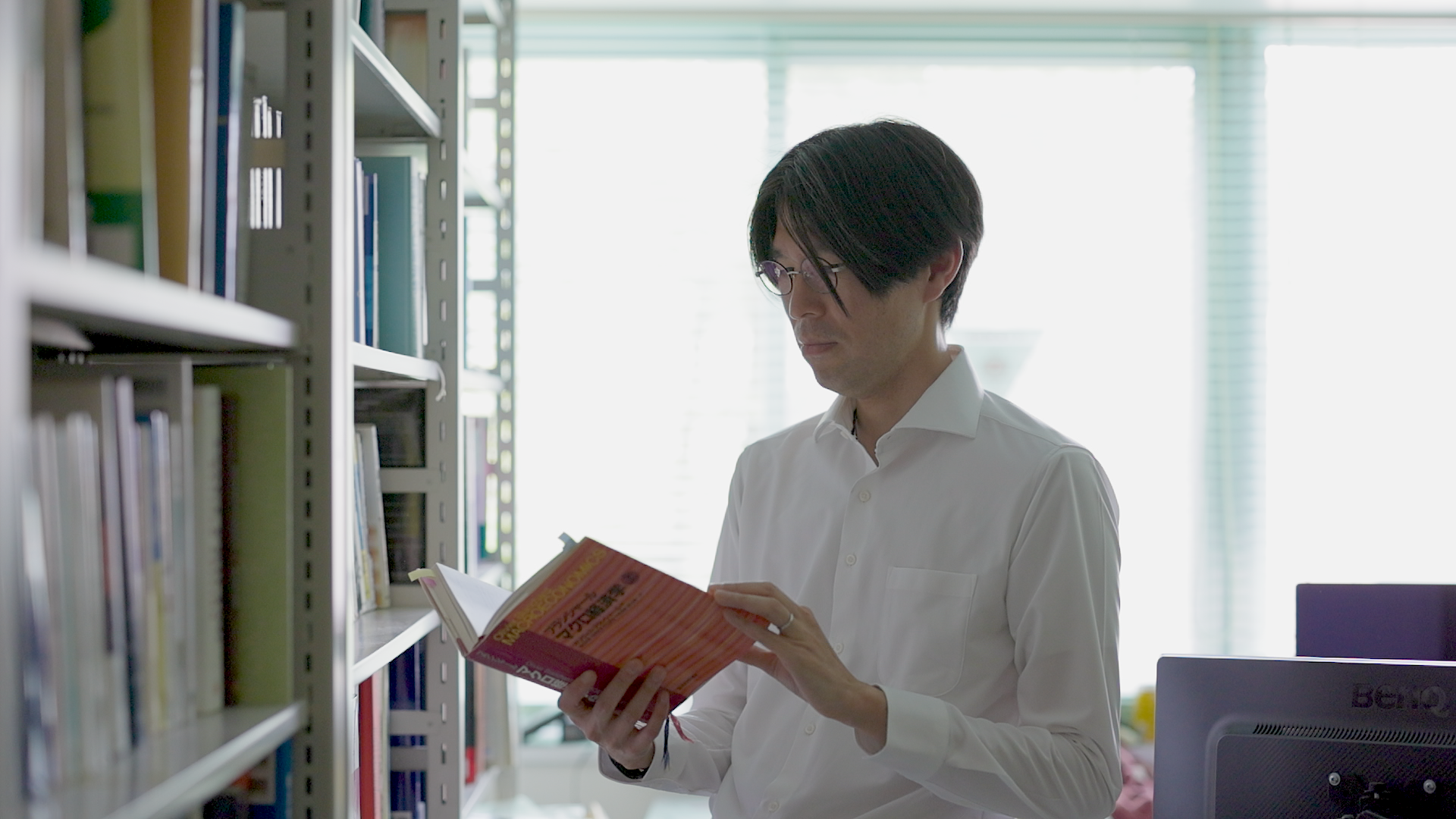







Home > Research > Research Overview > 2023 Movies > Faculty of Humanities and Social Sciences
Professor, Faculty of Humanities and Social Sciences (Macroeconomics)
TAMEGAWA Kenichi

We use a tool called a macroeconomic model to analyze the economic activity of an entire country. In specific terms, a macroeconomic model consists of simplified figures and mathematical equations that depict the behavior of entities engaging in economic activity, such as households, companies, and the government. This allows us to consider how gross domestic product and the average price of goods, as represented by the consumer price index, are determined.

Incidentally, there is a “business cycle” involving repeated periods of high and low economic activity. Knowing why this happens and how to respond to it is important to our lives. Many of us want to avoid living with ups and downs.
Some economic policies, such as the government increasing spending or the central bank raising or lowering interest rates, may be effective during large booms and busts in the economy.
If these economic policies have the potential to reduce
the booms and busts of the business cycle, then through
we may be able to avoid “living with ups and downs,” as
was mentioned earlier, by stabilizing our economic situation.

Previous studies have used macroeconomic models to show that the economy improves when the entities responsible for economic activity have an optimistic outlook on the future and it worsens when that outlook is not evident. We recently conducted an empirical analysis of the impact of monetary easing on economic activity using data that explicitly differentiated commercial and regional banks.